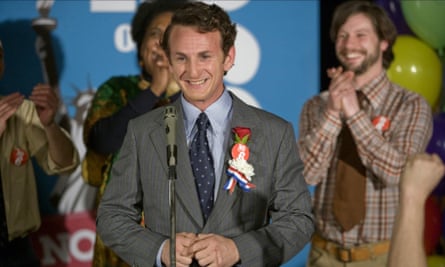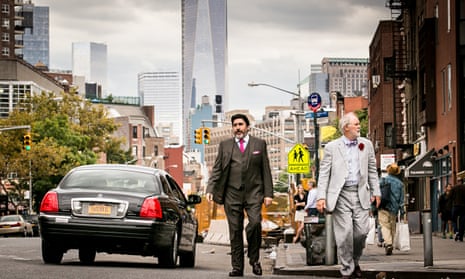Love is Strange is an intermittently wonderful new film about an ageing Manhattan couple who get hitched almost 40 years into their relationship, only for their suddenly straitened circumstances to force them to live apart for the first time. It’s a gentle and perceptive comedy-drama, so it’s rather a shock to find that the US ratings board, the Motion Picture Association of America (MPAA), has given it an R rating.
Short of the dreaded NC-17, which prohibits anyone under that age from seeing a film, this is the severest classification a movie can receive in the US. The R denotes that a picture contains material unsuitable for the under-17s, but stops short of banning that audience. Children can still be accompanied to an R movie by an adult, as I first discovered when I watched the violent horror-comedy Scream 2 in New York accompanied by the sound of a child several rows behind me begging his mother for more Reese’s Pieces.
The MPAA’s ratings website insists that several instances of profanity in Love Is Strange have earned the film its rating. But a likelier reason must be that its main characters are both men. They are played by two seasoned performers, John Lithgow and Alfred Molina. These actors are not required to enjoy anything more passionate on screen than a peck on the cheek and a cosy (but fully clothed) cuddle. But it is precisely the undemonstrative normality of their relationship that seems to have inflamed the notoriously prickly and conservative ratings board.
One look at the website tells you what you need to know about the MPAA. The images on its homepage show three families cheerfully enjoying movies together. None of them features same-sex couples. There aren’t even any single-parent families. The real giveaway is in the rating system motto, which reads: “Empowering families to make informed movie choices.” The website goes on: “Movies can open our children’s eyes to new places, cultures and ideas, and parents have an important role in ensuring that experience is positive and enriching.” The MPAA is comprised not of professionals with track histories in education or psychology, as the UK’s BBFC is. It is made up of volunteers whose only criteria for selection is that they are parents.
They have decreed that Love is Strange should have the same rating as Saw III (“strong grisly violence and gore, sequences of terror and torture, nudity and language”), My Bloody Valentine (“graphic brutal horror violence and grisly images throughout, some strong sexuality, graphic nudity and language”), and the new Sin City film (“strong brutal stylised violence throughout, sexual content, nudity, and brief drug use”).
It’s an insult to anyone’s intelligence to find that Love is Strange received its R for nothing more than “some strong language”. What – not even a teensy-weensy bit of terror and torture? No grisly images or graphic nudity? I wonder if the director, Ira Sachs, feels a bit like the faithful spouse accused erroneously of adultery: if he is going to be pilloried anyway, maybe he should have committed the crime for which he is being punished and thrown in a few chainsaw murders just for the hell of it.

We could at least admire the MPAA’s honesty if it admitted that Love is Strange has been guilty of “excessive normalising of a loving homosexual relationship with no punishment or prolonged unhappiness for either party”. Mainstream cinema has tended to like its gay characters either tormented (Brokeback Mountain), comical (The Birdcage), dead (Milk) or dying (Philadelphia). The couple in Love is Strange fall into none of those categories. Except for an instance of homophobia that forces one of them into unemployment, their sexuality passes without mention. It is only the MPAA that has made it an issue. The BBFC has gone for the slightly softer option of a 15 rating, again because of a few instances of strong language, though this also feels a tad harsh. I don’t recall the air turning blue when I saw Love is Strange at the Berlin Film Festival back in February.
The filmmaker Kirby Dick investigated the secretive board in his 2006 documentary This Film Is Not Yet Rated. He found that there were representatives in the MPAA from the Catholic and Episcopalian churches, though evidence about whether they voted on ratings decisions was inconclusive. But he did reveal an indisputable bias favouring violence, studio product (the MPAA is controlled by the major Hollywood studios and therefore looks kindly on their output) and sex in an exclusively comic or heterosexual context. Independent movies, and especially those that feature pleasure derived from sex, can expect to be dealt with more harshly. If that sexual pleasure is experienced by a woman or a gay person, precedents show this falls into the realm of the taboo. Four times as many films are rated NC-17 for sex than for violence.
In the week when a judge struck down Florida’s ban on same-sex marriage, describing it as “unconstitutional”, the ratings board cannot pretend any longer to be holding a mirror up to society – unless it is a mirror of the funhouse variety. The MPAA’s behaviour has revealed once again that it considers violence to be hunky-dory and torture tip-top. It is love, the message seems to be, which is strange.
